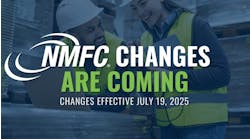A sluggish freight environment coupled with higher operating costs is forcing many carriers to tighten their belts and look to smaller, more profitable niches.
“In a difficult economy where opportunities to improve margin are limited, operational execution becomes critically important,” said Douglas Stotlar, president & CEO of Con-way Inc., in his company’s year-end earnings report “We took specific actions in 2007 to respond to the market and reposition our businesses. This will continue into 2008, as will our focus on providing customers with reliable, premium-value LTL and truckload transportation services.”
While Con-way’s revenue increased 20.2% to $1.2 billion in the fourth quarter last year compared to the same period in 2006, net income dropped by well over 50% to $34.5 million. For 2007, revenues increased 3.9% to $4.39 billion compared to 2006, while net income again fell significantly to $146.8 million for the year from $265.2 million in 2006.
Trucking freight rates are also increasingly under pressure as shippers step up their efforts to lower transportation costs. “Trucking capacity in our industry continued to outstrip freight demand during the fourth quarter [in 2007] and overall truck tonnage declined,” noted David Parker, chairman, president & CEO at Covenant Transportation, in his firm’s year-end release.
“At Covenant, we saw customer bid requests more than double vs. the third quarter of 2007 and increase more than 200% compared with the fourth quarter of 2006,” Parker added. “The competitive freight market was evident in our average freight revenue per loaded mile, which declined. In addition, freight brokers supplied a slightly higher percentage of our loads in the fourth quarter of 2007 as compared to both the third quarter of 2007 and the fourth quarter of 2006.”
For the fourth quarter, Covenant posted a profit of $176,000 on 3.6% higher revenue of $192.9 million, compared to a loss of $894,000 over the same period in 2006. However, for all of 2007, Covenant lost $16.7 million despite a 4.2% increase in revenue to $712.5 million, compared to a net loss of $1.4 million in 2006.
To build business in the current environment, carriers are looking outside their traditional markets. LTL carrier ABF Freight System, for example, said it’s seeing an uptick in demand from regional lanes.
“Though the overall freight environment was weak, [we] continued to gain market traction with [our] regional performance model (RPM),” said Robert Davidson, president & CEO of ABF’s parent company, Arkansas Best Corp. “The rate of revenue growth in regional lanes is substantially outpacing that of ABF’s traditional business. We are encouraged by the success we are having, especially in our next-day markets. ABF’s initial success confirms the validity of our low-risk strategy of organic expansion in the growing regional market.”
ABF said operating income dropped slightly to $9.8 million on revenue of $441.3 million in the fourth quarter in 2007, compared to $20.8 million in operating income on revenues of $441.4 million over the same period in 2006. For all of 2007, ABF said operating income dipped to $86.2 million on 3.3% lower revenue of $1.77 billion, compared to operating income of $135.3 million in 2006.
Still, opportunities abound for business, stressed Con-way’s Stotlar, especially outside the U.S. “Our people did a commendable job in a tough year,” he said. And while the domestic trucking freight market is in a slump, he noted the overall market for global logistics services is growing: “With [our] strategic acquisitions in Asia and expanding customer base, [we are] poised for solid growth, particularly as multinational businesses increase their reliance on third-party logistics to enhance global supply chain efficiency.”



